CEPAEA L., 1753
Synonyms :
Cepaea caesalpini Fourreau (s.a.)
Sedum paniculatum Lamarck (1778)
Sedum galioides Pourret (1785) / Sedum cepaea var. galioides (Pourret) Rouy (1901)
Sedum spathulatum Waldstein & Kitaibel (1805)
Sedum tetraphyllum Sibthorp & Smith (1809)
Sedum calabrum Tenore (1831)
Sedum strictum K.Koch (1847)
Sedum heptapetalum Raulin (1869)
Sedum amani Post (1893)
Sedum cepaea var. gracilescens Maire & Weiller (1939)
Sedum schwarzii Werdermann (1939)
Distribution : Central and southern Europe (excluded Iberian Peninsula), western Turkey, northern Africa. Shady places, usually on limestone, to 1500 m.
Description (according to 't Hart & Bleij in IHSP 2003) :
Glandular-pubescent herbs, annual or biennial (usually monocarpic but perhaps sometimes perennial), forming flat rosettes.
Leaves in whorls of 4, broadly elliptic to obovate or oblanceolate-spatulate, petiolate or subsessile, flat, rounded, sparsely pubescent or glabrous, often reddish, to 3 cm long, flowering branches erect, simple, rarely branched from the base, with alternate pubescent leaves.
Inflorescences diffuse or dense panicles, 15 - 40 cm, composed of numerous, usually forked and few-flowered cincinni, bracts small, pedicels (1 -) 3 - 5 mm.
Flowers 5-merous, sepals broadly sessile, slightly connate at the base, lanceolate-elliptic, subacute, ± 2 mm, petals free or basally slightly connate, lanceolate or ovate, aristate, white, rarely pinkish, often with a red pubescent keel, ± 5 mm, filaments white, anthers red, rarely yellow.
Cytology : 2n = 20, 22, 44
Note :
La description indique "usually on limestone", ce qui ne l'empêche pas de bien pousser en zone acide (terre schisteuse dans les Cévennes).
Ray Stephenson écrit (Sedum, Cultivated Stonecrops, 1994, p. 132) : "... in shady, rocky subalpine zone", mais on peut également le trouver à basse altitude (Périgord).
C'est une plante au feuillage peu succulent qui choisit comme habitat des zones plutôt ombragées, plus ou moins verticales (assurant ainsi un drainage efficace), mais avec un apport d'eau plus important que pour d'autres Sedum (humidité et / ou suintement). C'est un orpin discret (en dehors de la floraison) passant facilement inaperçu.
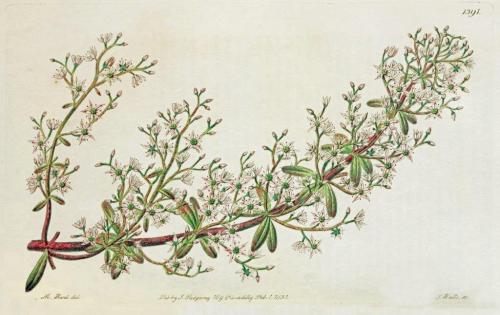
Sedum cepaea 1830 (Feb) Edward's Botanical Register 16: t.1391.
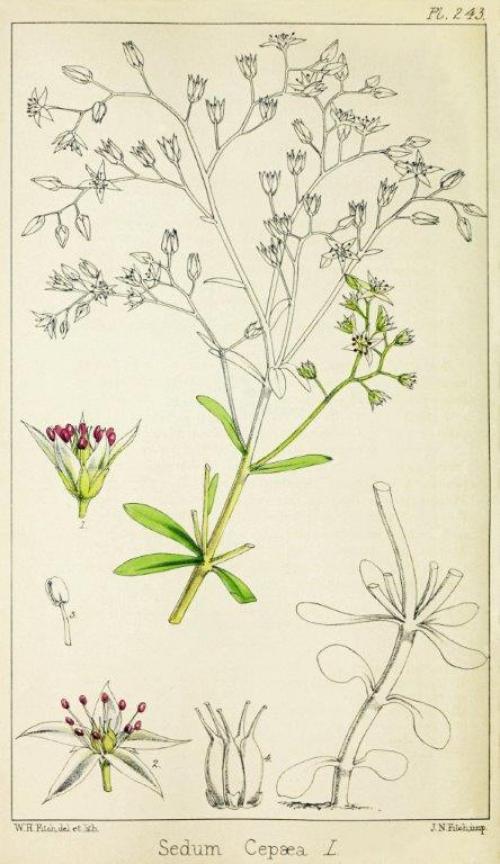
Sedum cepaea 1871: J.N.Fitch lithograph, from Saunders, Refugium botanicum 4: t.243. (Mar) 1871.
Plants observed in the / Plantes observées dans le Périgord - France (30.7.2011).
1. Jardins de Marqueyssac (Dordogne), 155 m alt. Calcareous soil / substrat calcaire :
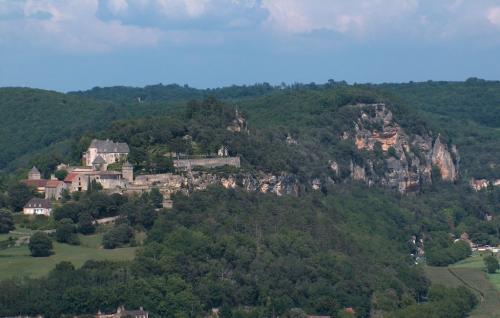
Two observations in shady and humid spots / 2 observations à des endroits ombragés et assez humides :
a) Near a fountain, in the shade, in a stonewall / près d'une fontaine, à l'ombre, dans le mur de pierre d'une allée :
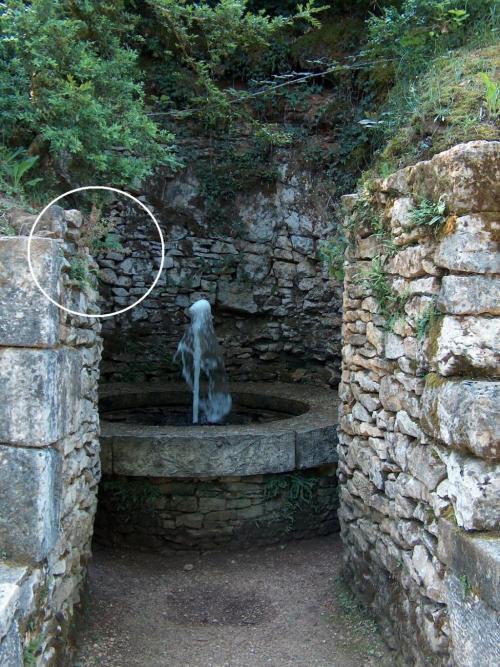
Young plants / jeunes plantes :
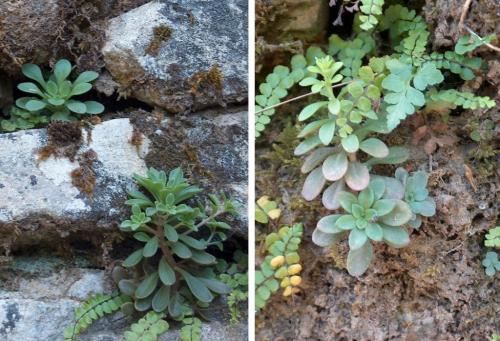
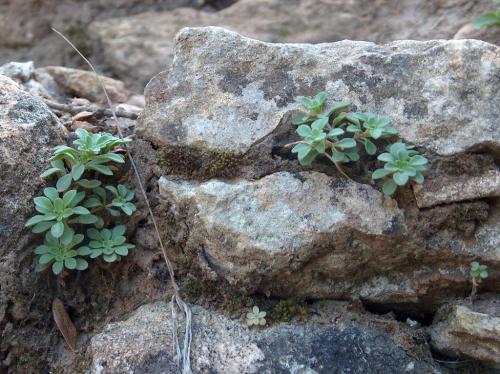
Flowers almost spent / plantes en fin de floraison :
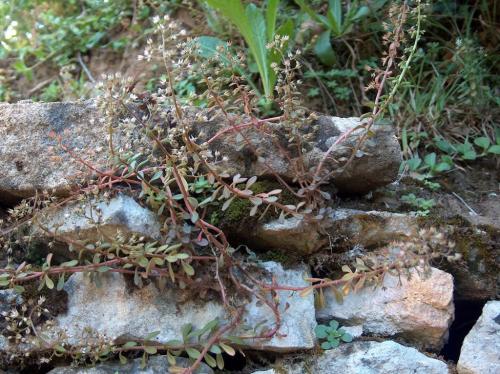
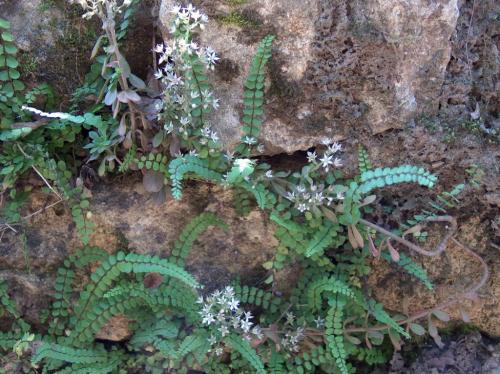
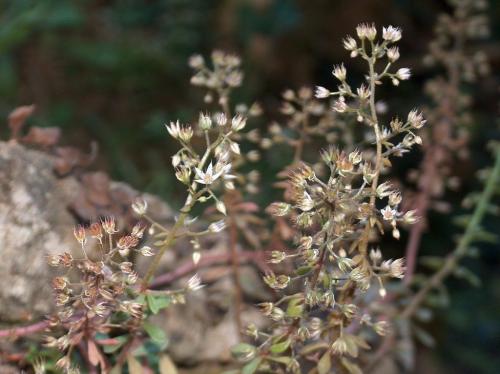
In the shadow of a box tree / à l'ombre d'un buis taillé :
Flowering plant / plante en fleur
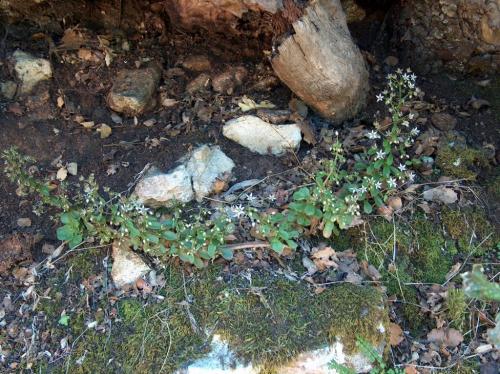
Close-up of the flowers / détail de la floraison :
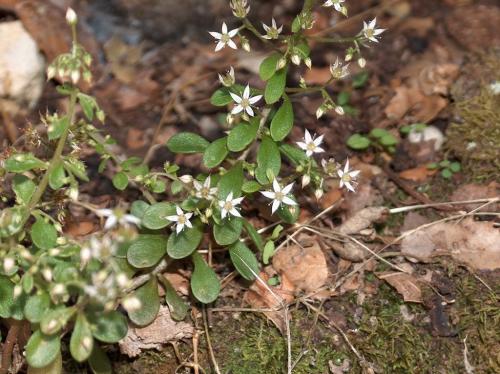
2. Château de Bridoire (Dordogne) 90 m alt., calcareous soil / substrat calcaire (31.7.2011).
Plants observed in shade but much less humid than at Marqueyssac / Plantes observées à l'ombre, mais nettement plus sec qu'à Marqueyssac.
Château de Bridoire
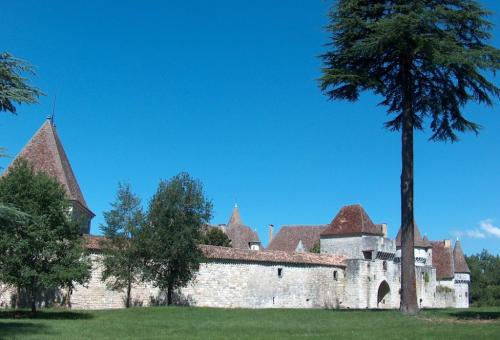
The habitat / localisation des plantes :
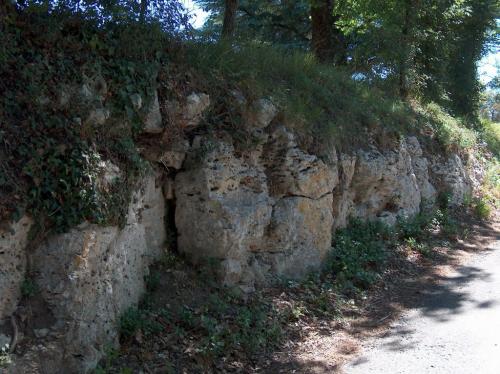
Young plantlets / jeunes semis :
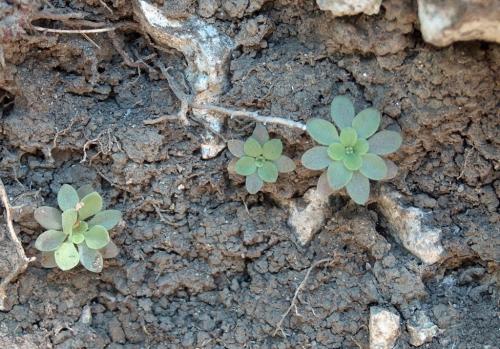
Flowering plant / plante en fleur :
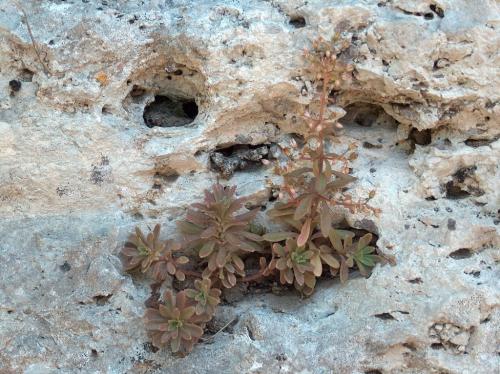
Very thyrsty plant / plante souffrant du manque d'eau :
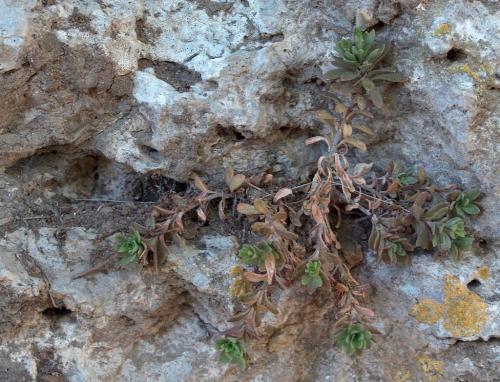
In company of other plants / plante poussant au milieu du reste de la végétation :

Photos Eric Barbier
To see more photos : Crassulaceae in the Cévennes mountains
by Eric Barbier